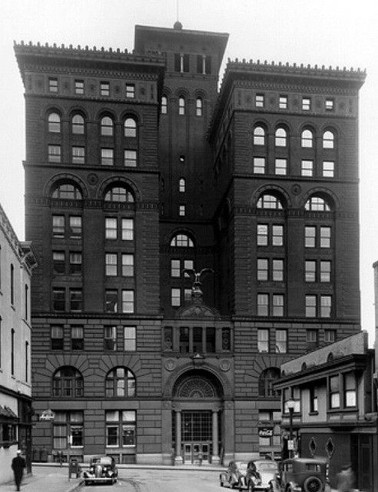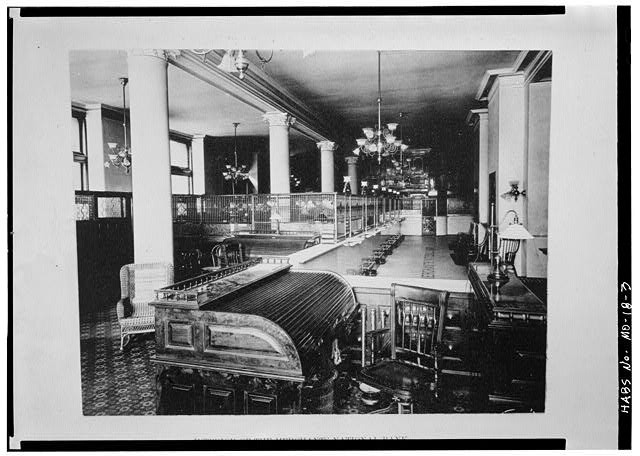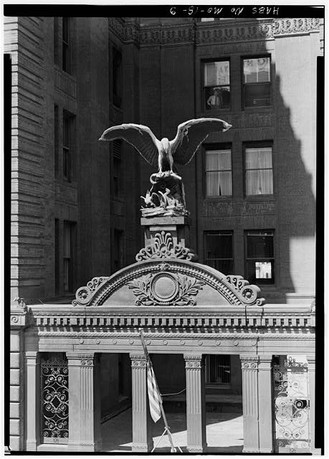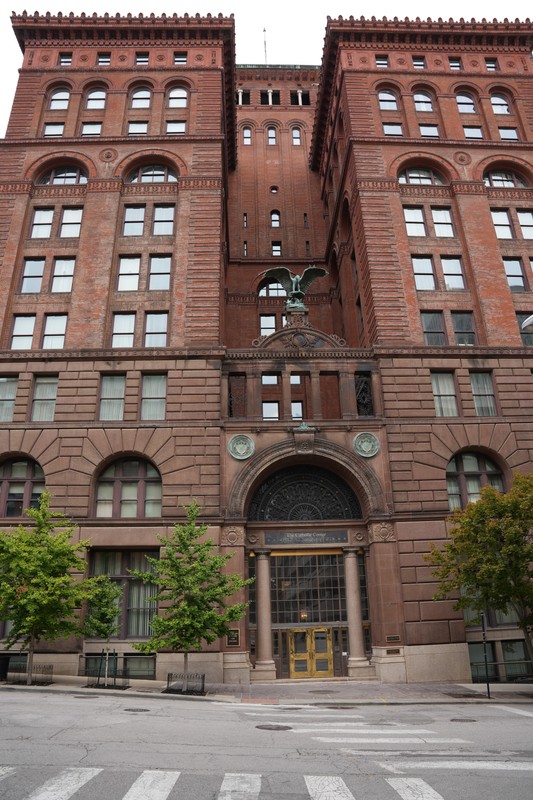New York Life Building of Kansas City
Introduction
Text-to-speech Audio
The New York Life building is a high-rise in the Library District of Kansas City. Built in a Neo-Renaissance style between 1887-90 by famous New York City architects McKim, Mead and White, it was a symbol of Kansas City’s prosperity in the late 19th-century as well as its reliance and faith in the money coming from the East, as Kansas City stood as a gateway to the West. The New York Life building is also considered to be Kansas City’s first skyscraper. The building mirrored the potential and investment coming to the area from all over the country, and it was the first manifestation of this prosperity. Today, the New York Life building is a centerpiece of the Library District neighborhood, and in 1970, the building was listed on the National Register of Historic Places.
Images
New York Life Building in the 1940s

Interior of the New York Life Insurance Building, 1890. Credit to the Library of Congress Prints and Photographs Division.

Sculpture over the south front doorway. Credit to the Library of Congress Prints and Photographs Division.

The New York Life Building as it appears today

Backstory and Context
Text-to-speech Audio
History of the New York Life Building
The New York Life building represents one of the high points in the growth and development of Kansas City. Throughout the 1880s, the city was experiencing unprecedented growth in terms of trade, production, industry, population, and real estate transfers. Therefore, Kansas City was attracting a lot of attention in that time as an area for investment potential. Commissioned by the New York Life Insurance Company, who felt that Kansas City was to be the future center of western commerce, the New York Life building was designed in 1885 by the New York City architecture firm of McKim, Mead & White.
When completed in 1890, it was the city’s tallest and largest building and represented the city’s transition from “cow town” to a city of importance. Along with the building was substantial downtown development.1 The building was in use until 1988, when it was abandoned. Fortunately, in 1996, a $35 million restoration gave the building modern energy, environmental, and communications features. In 2010, the Roman Catholic Diocese of Kansas City-Saint Joseph purchased the building and renamed it the “Catholic Center.”2
Transcription on the Historical Marker
Architects: McKim, Mead and White
Constructed: 1887-90
This Neo-Renaissance Style office building symbolizes the faith of the moneyed East in Kansas City during the unprecedented prosperity of the 1880s. The bronze eagle was cast in the studio of Augustus Saint Gaudens. The barrel-vaulted, skylighted lobby, mosaic floors and lavish use of marble and cherry-wood characterize the fine design. Entered on the National Register of Historic Places in 1970.3
Sources
1.) "New York Life Building." National Register of Historic Places Nomination Form, July 1969. Web. 9 July 2016. http://dnr.mo.gov/shpo/nps-nr/70000336.pdf
2.) Denzer, Marty. "Catholic Center Brings New Life To The Old New York Life Building." The Catholic Key, 20 May 2011. Web. 9 July 2016. http://catholickey.org/2011/05/20/catholic-center-brings-new-life-to-the-old-new-york-life-building/
3.) "New York Life Building: Kansas City Landmark." Hmdb.org, n.d. Web. 9 July 2016. http://www.hmdb.org/marker.asp?marker=64003
Photo by David Trowbridge
